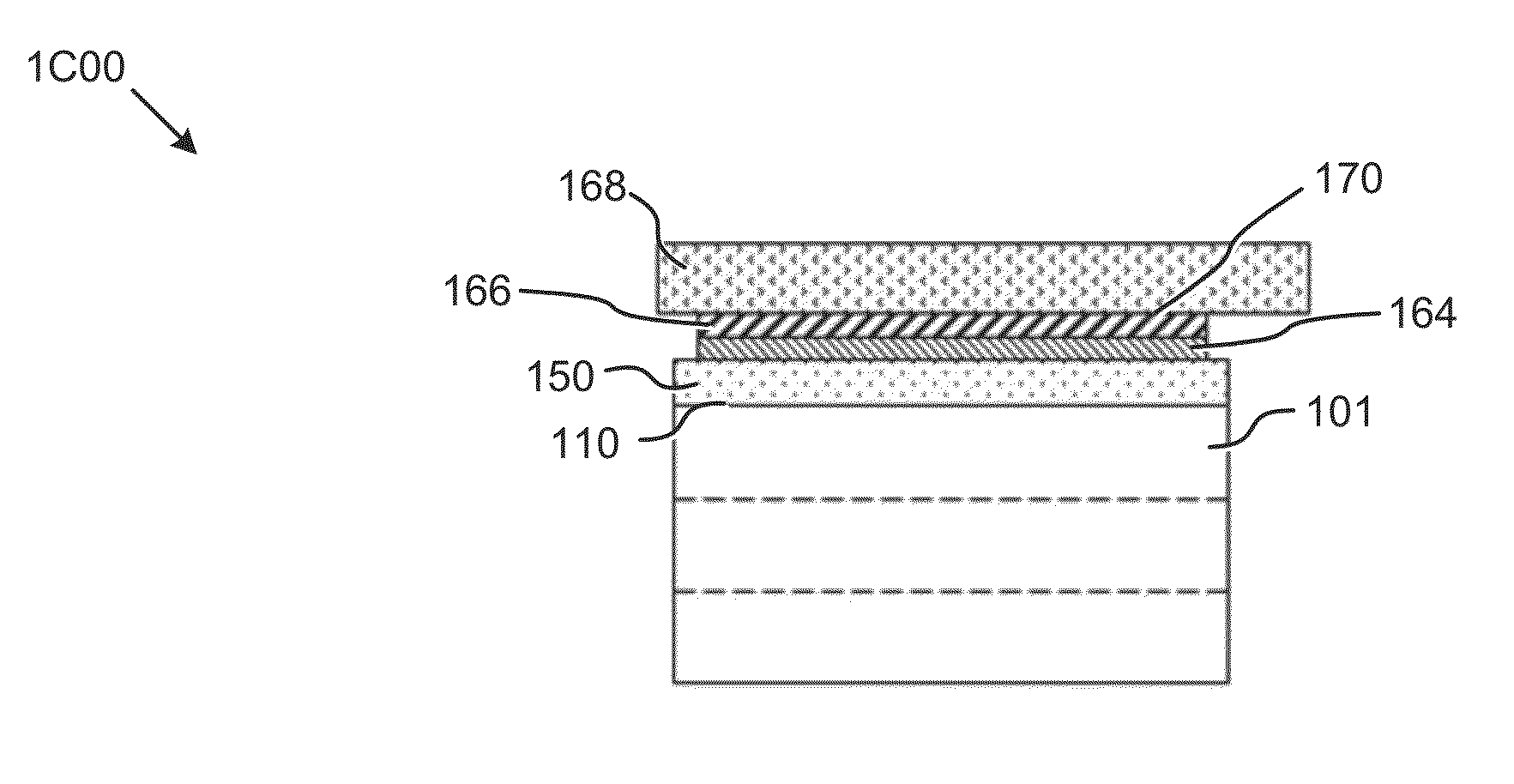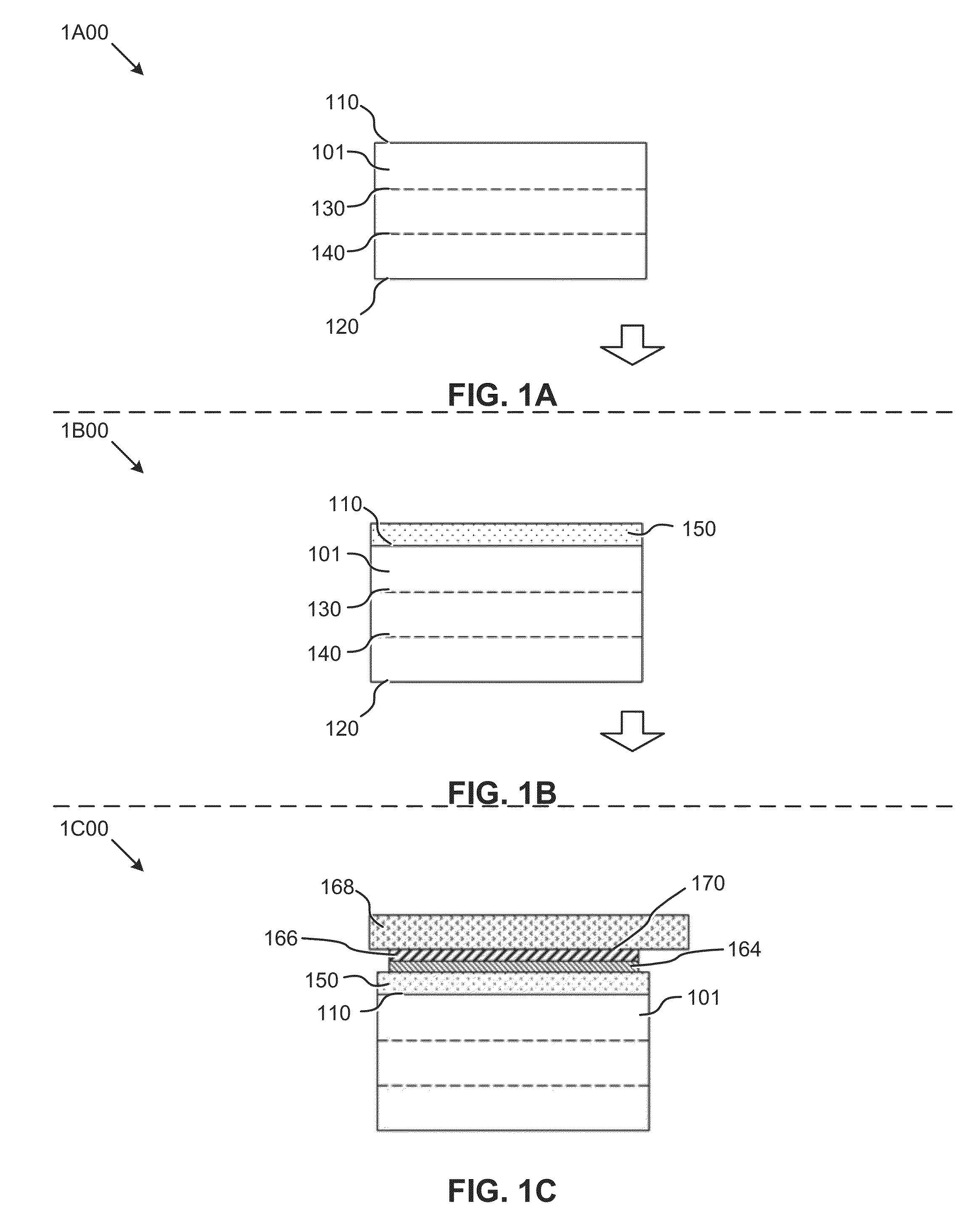Reusable nitride wafer, method of making, and use thereof
a nitride wafer and reusable technology, applied in the direction of crystal growth process, natural mineral layer products, semiconductor lasers, etc., can solve the problems of affecting the quality and reliability of these devices, affecting the growth of epitaxial layers, and affecting the yield of secondary electrons, so as to achieve the effect of high secondary electron yield
- Summary
- Abstract
- Description
- Claims
- Application Information
AI Technical Summary
Benefits of technology
Problems solved by technology
Method used
Image
Examples
example 1
[0046]An epitaxial LED device layer, comprising an n-type layer, an InGaN active layer, and a p-type later, is deposited on an HVPE-grown wafer by MOCVD, with a total thickness of approximately 4 micrometers. A nickel-based stressor layer is deposited overlying the device layer, and a flexible handle layer is cemented onto the stressor layer. A vertical load is applied to the flexible handle layer, causing spalling of the epitaxial LED device layer plus approximately 40 micrometers of the original substrate.
[0047]The spalled wafer is broken into two pieces. For the first of the two pieces, the spalled surface of the GaN wafer is lapped, polished, dry-etched, and chemical-mechanically polished, while the second half-wafer is left in the as-spalled condition. Both pieces are then fastened to a rigid seed rack and inserted into a silver capsule along with a 13.4% open area baffle, polycrystalline GaN nutrient, NH4F mineralizer, and ammonia, and the capsule is sealed. The ratios of GaN ...
PUM
| Property | Measurement | Unit |
|---|---|---|
| thickness | aaaaa | aaaaa |
| thickness | aaaaa | aaaaa |
| thickness | aaaaa | aaaaa |
Abstract
Description
Claims
Application Information
 Login to View More
Login to View More - R&D
- Intellectual Property
- Life Sciences
- Materials
- Tech Scout
- Unparalleled Data Quality
- Higher Quality Content
- 60% Fewer Hallucinations
Browse by: Latest US Patents, China's latest patents, Technical Efficacy Thesaurus, Application Domain, Technology Topic, Popular Technical Reports.
© 2025 PatSnap. All rights reserved.Legal|Privacy policy|Modern Slavery Act Transparency Statement|Sitemap|About US| Contact US: help@patsnap.com



